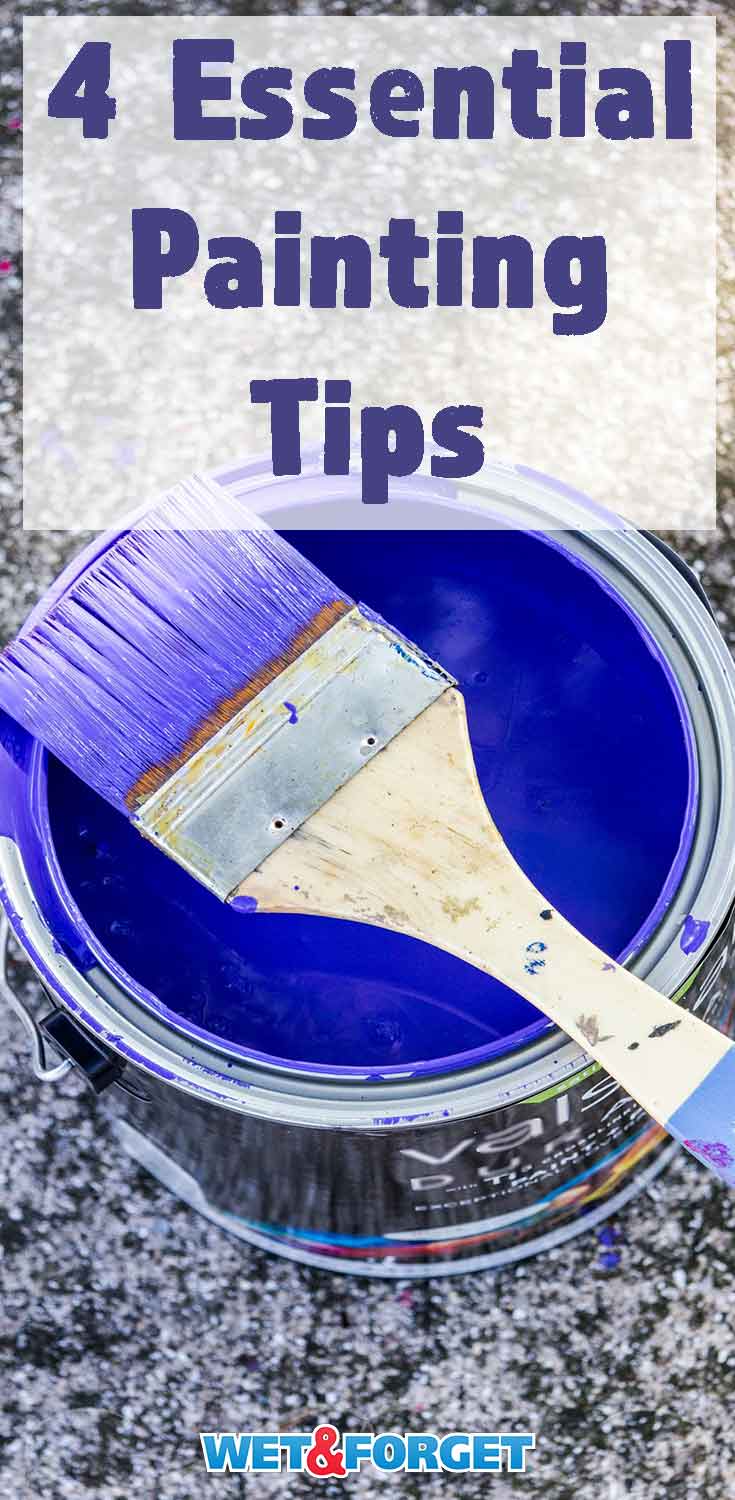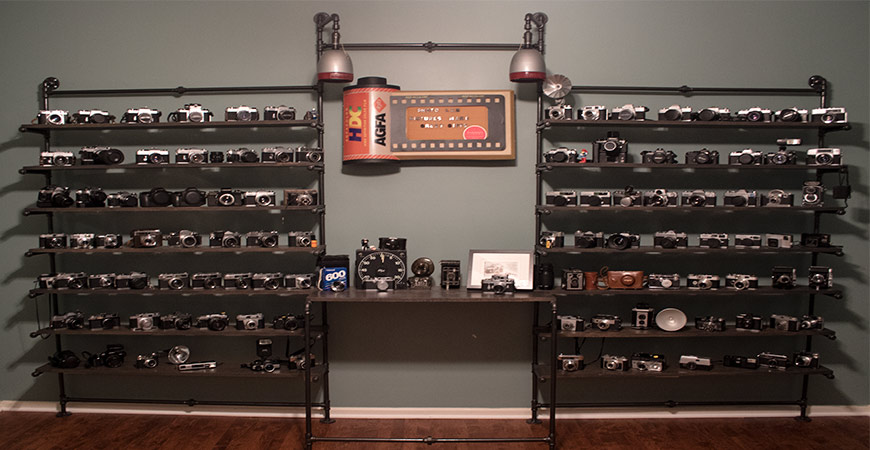
Get the Job Done Right with these 4 Essential Painting Tips
A few cans of paint can totally transform any room’s look and beautify and protect your home’s exterior. But the wrong equipment or improper preparation can lead to a big mess and a bigger headache. These 4 tips for painting will help you breeze through your house painting project and get the job done like a pro.
And, without the hefty contractor price tag. So, start spreading some color!
Tip 1: Get the Right Paint
Some paints are suitable for indoor or outdoor use and others are only good for one or the other. So the first step is to make sure that the paint you’re looking at is OK for your project’s location.
Use an indoor-only paint outside and you’ll wind up with peeling paint and water leaks. On the other hand, outdoor-only paints can have chemicals that aren’t healthy for daily indoor exposure.
The right paint is more than just an indoor-outdoor issue. If you’re painting a room, then be sure to think about how your family uses that room and what the paint will have to endure.
If you’re painting a wall that you’ll need to scrub often, skip over non-scrubbable full-matte paints. Instead, opt for more durable satin-finish surfaces, or paint that is specifically made to hold up to scrubbing.
You don’t want to see all hard work wind up on the side of a sponge! Furthermore, choose a paint that is more resistant to mold and mildew growth for the damper areas. This includes your bathroom, basement, and laundry room.
Some paints are specifically made for this, and Consumer Reports tested some paints and found a few winners. If you do wind up with indoor mold and mildew growth, wipe it out with Wet & Forget Indoor Mold+ Mildew Disinfectant Cleaner.
Once you’ve found the right type of paint, it’s time to choose a color. This is a choice to take your time with because you’ll probably be living with the result of your choice, good or bad, for years to come.
Bring home several paint chips to hold up to the area that you’ll be painting, and choose a few to “audition” by buying paint samples and putting a small amount on the wall. This step is a little inconvenient, but it’s the best way to know what you’re getting because paint chips never look quite the same as the paint does up on the wall.
A good house painting rule of thumb is that you should expect the color to look a shade or two darker on the wall than it did on the paint chip.
Tip 2: Get the Right Equipment
The right equipment is essential for any job, and if you bring home equipment that is substandard or not suited for the job you’re doing, your house painting adventure could turn into a misadventure. Get the right tools, and make your work easier!
The first thing to think of is the size of the job. If you’re going to be painting a very large surface, a quality paint sprayer is the way to go.
Check out this video guide on paint sprayers to get started. For small to medium jobs, a good paint roller, the right brushes, and edgers will be your core tools.
This Old House talked to house painting pros and got these tips on which equipment is best, including the best type of roller—their expert likes a 9-inch lamb’s wool roller—and the best synthetic brushes.
Pros also recommend investing in a painter’s pole for your roller. That way, you don’t have to climb up and down a ladder all day.
DIY bloggers The House of Smiths compiled this list of 10 must-have painting tools, including mess-saving things like hinge protectors and handy items like a hand-held paint guard that you can use in place of painter’s tape for small touch-ups.
They also recommend a comfortable plastic bench and a handy, easy-to-hold paint pail. You’ll also need a basic paint-rolling tray.
Tip 3: Prepare the Surface
Even if you use the best paint and equipment and do a wonderful job applying the paint, you will wind up with a mess if you haven’t prepared the surface beforehand. Buying a primer-free paint will let you skip that step, but there are still some essential steps that you can’t afford to miss when you’re preparing to paint your home.
Indoors
Inside your home, it’s all about patching holes, caulking and filling cracks, and making sure the surface is clean, dry, and lint-free before you pick up the paint roller. This video from Today’s Homeowner demonstrates what you need to do to prepare indoor walls for painting.
Outdoors
If you’re painting exterior walls, trim, soffits, or other outdoor surfaces, it is best to clean the surface before you start painting. In addition, you may need to do some scraping, repairs, or other preparations.
This video from Today’s Homeowner will help you make sure you have those exterior surfaces ready to go before you start applying the paint. If you’re thinking of painting during the cooler months, check out this short video first about which temperatures are okay for painting outdoors.
Tip 4: Make your Job Easy with these Painting Hacks
House painting can be a big, messy job, but it doesn’t have to be! These clever painting tips will save you time, effort and mess, and even help you get professional results.
To keep yourself spatter-free:
You know you’re going to drip paint on yourself, so be ready. Wear an old ball cap, and either wear an old long-sleeved shirt. Or, rub your arms with lotion or baby oil to keep the paint from adhering to your skin.
Moreover, wear latex gloves to avoid having to scrub paint from under your fingernails.
To speed up post-painting cleanup:
- Put a narrow band of aluminum foil around the top rim of your paint can after you open it. This will keep paint from dripping where the lid will go when you close the can. Plus, it’ll make it easier for you to open it again next time.
- Line your paint tray with a double or triple layer of plastic shopping bags. When you’re done painting, you can discard the bags and have a clean paint tray.
- Invest in a good drop cloth, of course!
- If there’s a smaller, awkward-shaped object that won’t quite fit under your drop cloth, cover it with plastic wrap.
- If you buy water bottles in bulk, use the plastic-covered box the bottles came in. This keeps them organized while you’re using them.
To get professional results with less work:
- Cut out the front part of a plastic milk jug to make a handy paintbrush holder with a built-in handle. See #4 on this webpage for a photo.
- After you’ve washed and dried interior walls, remove any excess lint with a lint-attracting duster-mop such as Swiffer.®
- After you’ve opened your paint can wrap a large rubber band around the can. It should stretch across the center of the top opening. Now you can wipe your paintbrush on the rubber band to remove excess paint and prevent any dripping.
- Move your paint roller in the “M” pattern you see pictured in item #5 on this webpage to cover the wall evenly.
- If you need to take a break, wrap your brush or roller in a plastic bag to keep the paint from drying.
We hope these house painting tips help you with your next, big project!
Photo courtesy of Robert S. Donovan.











